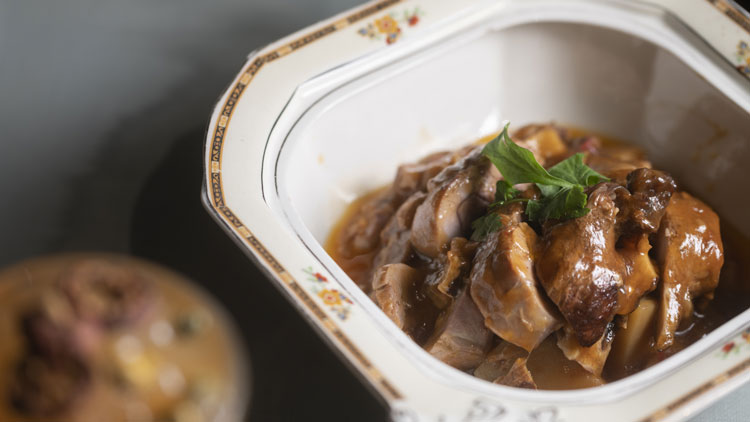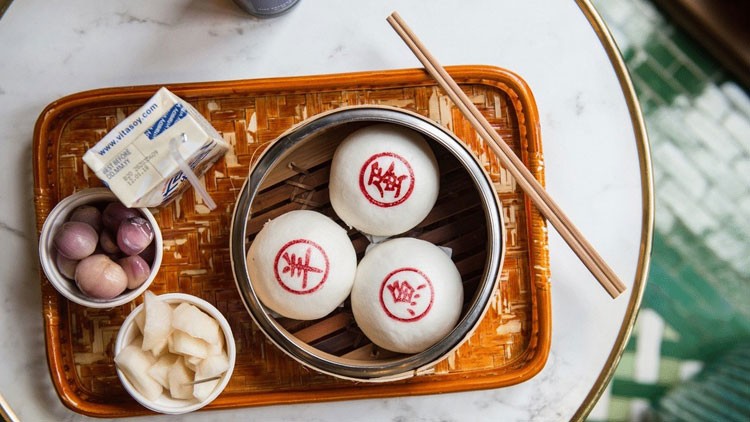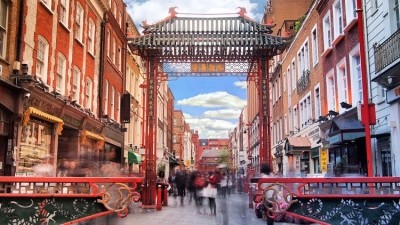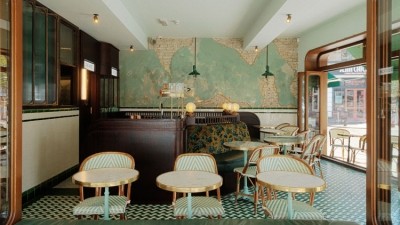"Staffing remains one of the most difficult areas of the business": Alex Peffly and Z He

Bun House in Soho always appeared to be really busy. Why change the concept?
Alex Peffly: We had reached a production bottleneck at the site. The downstairs lounge, which we called Tea Room at Bun House, had taken up more space than anticipated, and it encroached on the adjoining kitchen. At the time we were looking to take on more pitches at food festivals and markets, which was a struggle as the large lounge meant we only had limited space to prepare and store the extra buns. So we began looking to move Bun House to a new location where we could scale-up production and make doing these events more manageable, which eventually led to the opening of a larger site in Chinatown.
Z He: The problem too was that as it was hidden away downstairs, not enough customers were aware of the Tea Room’s existence. So the whole concept, which was more focused on serving brunch and cocktails, never really had the opportunity to flourish. But, having moved Bun House to Chinatown, we saw an opportunity to reconsider the Tea Room idea. The decision to reopen the site as Wun’s Tea Room & Bar was born from that.
Wun’s has a very striking aesthetic, what was the inspiration?
ZH: It’s inspired by 1960s Hong Kong, which was a fascinating time in the history of the region. I designed the upstairs to be reminiscent of the city’s open-air street cafes, known as dai pai dongs, and even had the restaurant’s cocktail menus printed in the style of old newspapers that are reflective of the era. The downstairs we’ve turned into a late-night bar that’s decked out with neon lights and velvet seating that’s also very evocative of Hong Kong; the city’s nightlife really took off in the 60s, and Wun’s is also a nod to that moment in time.
What’s on the menu?
ZH: The menu is predominately inspired by food from my childhood, and includes many Cantonese dishes that I grew up with like my gran’s sour plum braised duck that’s made from a secret family recipe. That’s been one of the most popular dishes since we launched, along with the sugar-skin ibérico char siu; the clay-pot rice with soy-braised aubergine; and the lacy dumplings with pork and chives.
AP: It’s a really interesting menu. Generally, Cantonese cuisine in London is just dim sum; so it’s nice to be able to offer a broader range of genuine flavours. It’s funny, we’ve positioned Wun’s to be a more experimental space, but with the food the focus is more on authenticity. And because it’s unfamiliar to many, it still comes across as quite radical.
Will you be looking to expand Wun’s in the future?
AP: Possibly, yes. The enigmatic nature of Tea Room at Bun House didn’t work, and it was hard to capture the imagination of diners by serving brunch and cocktails in a basement. But by bringing it upstairs with Wun’s, we’ve literally brought the concept into the light and made it more accessible. It certainly has the potential to grow, but for now we want it to feel like a very singular experience.
And how about Bun House?
AP: We both think the concept offers great opportunity to expand in the future. Now that we’ve opened the site in Chinatown, we want to establish it as a flagship for the brand. And from there we will be looking to open more satellite locations in food halls and markets.
Operators in Chinatown have notoriously faced problems with staffing, is this something you have experienced with Bun House?
ZH: Definitely, when it comes to running the business this is one of the most difficult areas, because making the buns is such a specialised process. So it’s not enough for a trained chef to come to an interview and tell us that they like the cuisine. We always want our staff to be knowledgeable of what the buns represent; to be able to understand the culture, and the story behind the food. It really comes through in the finished product when you have somebody preparing the buns that grew up with them; who know the food and are passionate about it. Buns made by someone who hasn’t grown up with them rarely have that extra quality we’re looking for.”
AP: Quality control is one of the most difficult operational tasks we have as making the buns is a very skilled labour, which is why centralising the production at our Chinatown site was crucial. But it has caused difficulties, not just with hiring chefs, but with front of house staff too. There’s still an old-school style of service ingrained within Chinatown where, as a consumer, you can feel like you’re being pushed to buy a dish whether you want to or not, and that’s not something we want to adopt as part of Bun House’s culture.
How does being in Chinatown compare to Soho?
AP: Rent is high in both neighbourhoods, but with regards to our Chinatown restaurant there’s certainly a reason we’ve not set up shop on Gerrard Street. I’ve no doubt that we’d be selling more buns if we did, but for a similar-sized site to the one we have on Lisle Street it would be costing us between £400,00 and £600,000 annually. In Chinatown too, you’re dealing with listed buildings that can cause unforeseen operational complications that are tough to solve; especially if the solution involves dealing with licensing language that was initially written in the 70s and still happens to be active. Of course, dealing with listed buildings isn’t just a problem in Chinatown, but I think it feels a little more magnified there because the neighbourhood has a very specific conserved status, and with that comes a particular kind of attitude from some groups.























